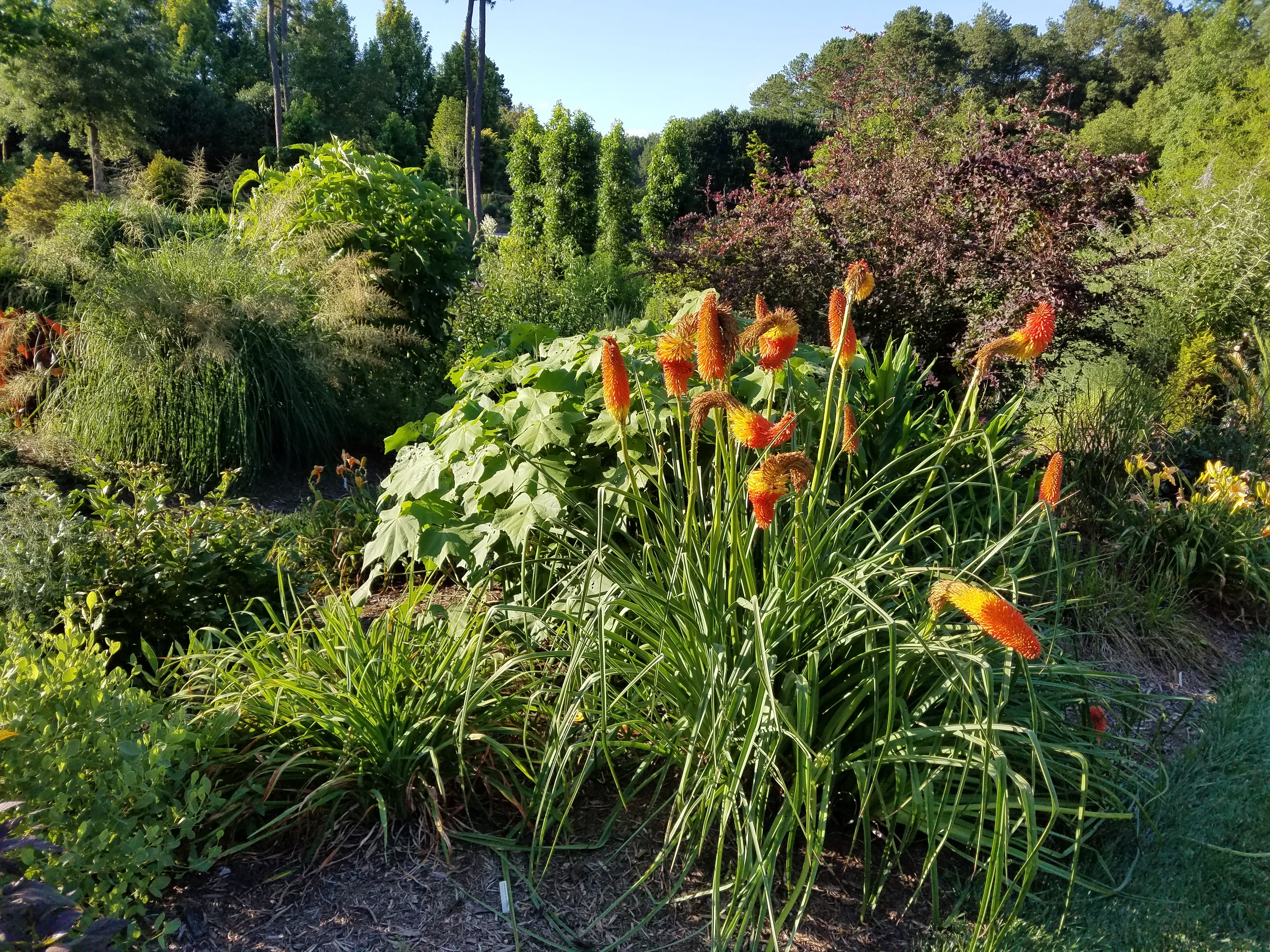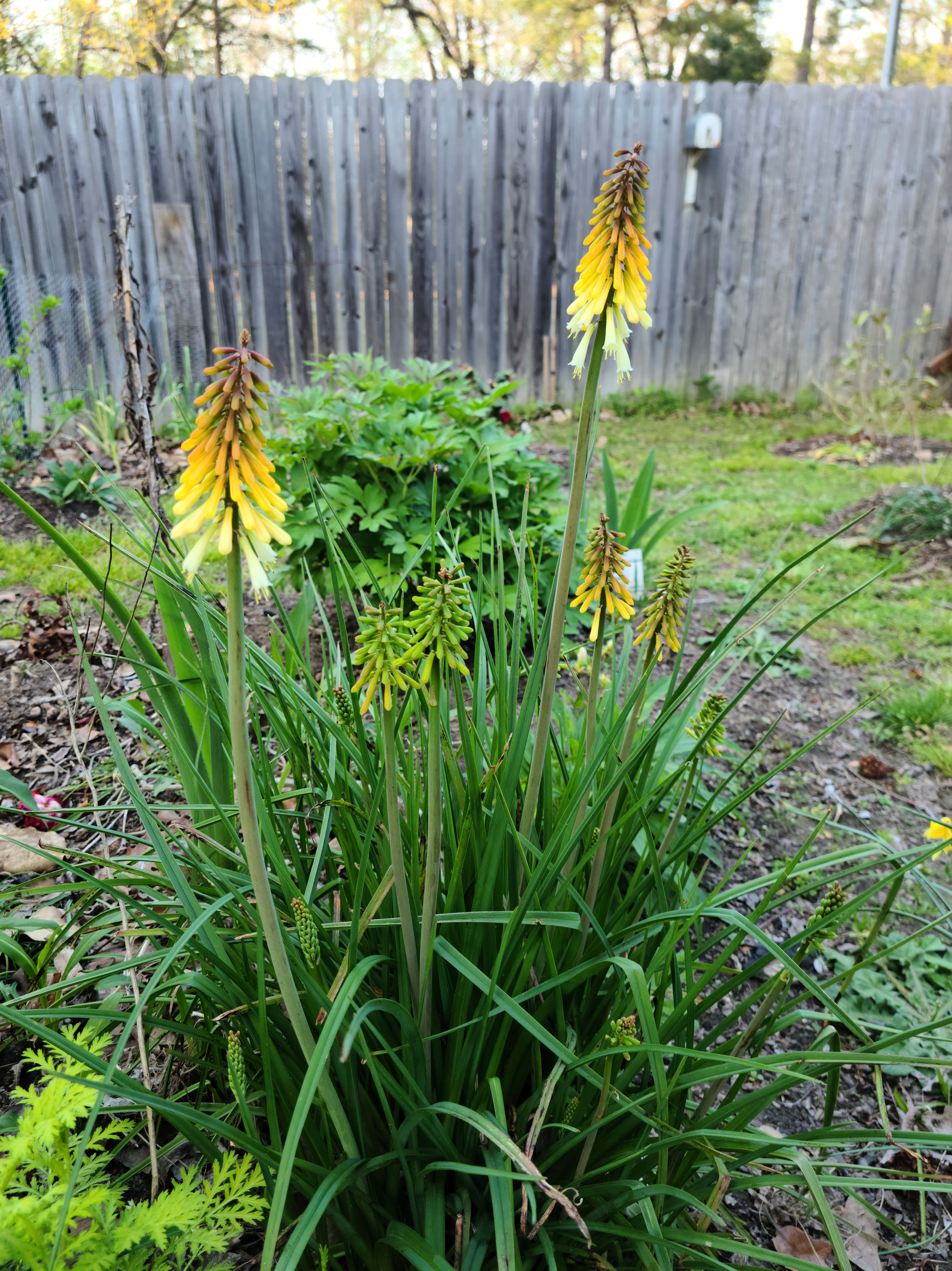Things Are Heating Up in the Garden: Red-Hot Poker Plant
go.ncsu.edu/readext?930363
en Español / em Português
El inglés es el idioma de control de esta página. En la medida en que haya algún conflicto entre la traducción al inglés y la traducción, el inglés prevalece.
Al hacer clic en el enlace de traducción se activa un servicio de traducción gratuito para convertir la página al español. Al igual que con cualquier traducción por Internet, la conversión no es sensible al contexto y puede que no traduzca el texto en su significado original. NC State Extension no garantiza la exactitud del texto traducido. Por favor, tenga en cuenta que algunas aplicaciones y/o servicios pueden no funcionar como se espera cuando se traducen.
Português
Inglês é o idioma de controle desta página. Na medida que haja algum conflito entre o texto original em Inglês e a tradução, o Inglês prevalece.
Ao clicar no link de tradução, um serviço gratuito de tradução será ativado para converter a página para o Português. Como em qualquer tradução pela internet, a conversão não é sensivel ao contexto e pode não ocorrer a tradução para o significado orginal. O serviço de Extensão da Carolina do Norte (NC State Extension) não garante a exatidão do texto traduzido. Por favor, observe que algumas funções ou serviços podem não funcionar como esperado após a tradução.
English
English is the controlling language of this page. To the extent there is any conflict between the English text and the translation, English controls.
Clicking on the translation link activates a free translation service to convert the page to Spanish. As with any Internet translation, the conversion is not context-sensitive and may not translate the text to its original meaning. NC State Extension does not guarantee the accuracy of the translated text. Please note that some applications and/or services may not function as expected when translated.
Collapse ▲Diversity is the spice of life in the garden, and we are fortunate in North Carolina to have a goldilocks climate that gives us a broader planting palette than other places. It is just warm enough in the winter, and just mild and moist enough in the summer. There is almost always a breeze and we have amenable soils, despite what some may think! Because of this, we can look to other continents for interesting plants. We have adopted many plants from African countries, but one of the easiest and most tropical-looking plants is the red-hot poker plant, Kniphofia ssp.
What’s to Love
Red-hot pokers or torch lilies get their common name from the tall flower spikes covered in tiny, tubular flowers of warm reds, oranges and yellows that could be reminiscent of a glowing poker left in a fire. Not to worry, these flowers are not hot to the touch, though they do pop in the landscape!
They bloom from April to October, generally. The bloom time depends on the species and cultivar you have. If you deadhead them, they will sometimes flower again, possibly up to one or two more times, if you’re diligent.
These are herbaceous perennials that return every year and can look like a thick clump of grass sometimes! The semi-evergreen foliage is dramatic, even when the plants aren’t in flower. The long, strap-like leaves can be tall and upstanding, or drape like ribbons around the plant.
The plants can be two to four feet tall, depending on the variety. Definitely read the label before you purchase if you are short on space! Modern varieties have been selected for more compact habits and tighter flowering.
Relations
The genus Kniphofia is in the plant family Asphodelaceae, which is in the Order

The tiny, tubular flowers of Kniphofia are beloved by bees and hummingbirds alike. Photo by Amanda Wilkins.
where Asparagus is. If you look at the emerging flower spike, you can see the resemblance to Asparagus! Funny enough, the torch lily is more closely related to Aloe and daylilies than Asparagus, and you can see this more if you observe the shape of the flowers. Many other African plants are in the Asphodelaceae and have adaptations to cope with the challenging climate and soils of the continent.
Growing Conditions
Kniphofia are very easy to grow. They prefer full to part sun, but will tolerate partial shade, but you will sacrifice flowering. Well-draining, fertile soil is critical, as torch lilies will rot if their roots sit in saturated soils for long periods. That is not to say

Kniphofia aff. citrina blooms happily in Sanford, NC in April 2023. This is a compact species of torch lily with flowers that are usually yellow to yellow orange. They bloom earlier than large species, generally. Photo by Amanda Wilkins.
they don’t mind getting rain or irrigation! The more water the plants get, the bigger they will be, as long as the water drains away. They grow in clumps, which will expand over the years, and are easy to divide, if need be. You can cut back the foliage if it starts looking ratty over the summer. It is best to leave the foliage over the winter to protect the crown of the plant though.
Sourcing
We are fortunate to have a strong green industry in North Carolina and it is easy to access a wide diversity of plants! Many of our local and regional nurseries and garden centers carry a variety of Kniphofias in every shape, size and color for your garden tastes. Make sure to verify the size and shape of your plant before bringing it home! Some of these plants are tight and tidy, and some are large and lounging!
Add some tropical flavor to your garden by trying a red-hot poker in your flower bed this year!
References:




